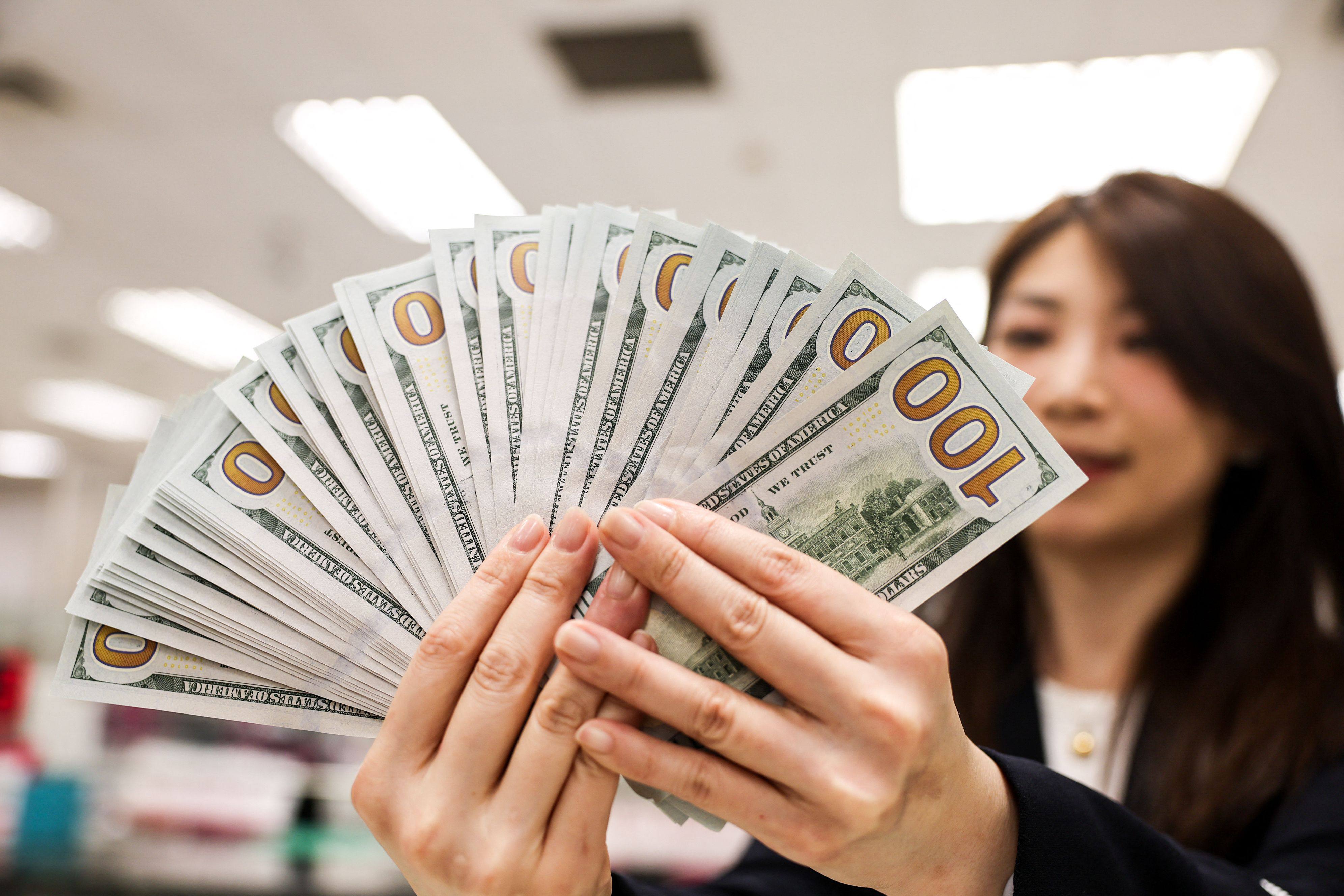Taiwan dollar surge ‘a warning shot’ in Asia’s trend towards de-dollarisation: analysts
Is the Trump administration’s hostility pushing the region away from a staple of American power?

The New Taiwan dollar’s sudden surge in recent days, along with the appreciation of other Asian currencies, highlights the prospect of deepening regional de-dollarisation as investors rethink their investments in the US currency amid Washington’s “extremely predatory” behaviour towards foreign countries, analysts said.
Economies like Taiwan, that historically have very high exposure to assets denominated in US dollars, have taken a foreign exchange-led hit after the currency weakened in recent weeks, wrote Francesco Pesole, foreign exchange strategist at Dutch bank ING, in a note on Tuesday.
“Local players are now seeking greater US dollar hedging as well as starting to diversify away from US investments.”
The shift away from US assets will likely contribute to the continued devaluation of US dollars, supporting a “bearish narrative” for the currency, Pesole added.
The New Taiwan dollar’s surge hit a pause on Tuesday, closing at NT$30.280 to US$1 from Monday’s NT$30.145 – ending its jump since April 24. It traded at NT$30.244 as of 2.50pm on Wednesday.
Taiwan’s central bank published a statement on Monday urging manufacturers to remain calm and avoid “dumping US dollars due to irrational expectations based on over-exaggerated or untrue analyses in the market”.
There has been speculation that the currency’s appreciation against the US dollar was part of trade talks between the US and Taiwan, according to Hu Jin-li, a professor at the Institute of Business and Management at National Yang Ming Chiao Tung University in Taipei.
The appreciation’s short-term costs include reductions to US dollar-based export value, calculated in New Taiwan dollars, and increased import payments also calculated in the currency, raising inflationary pressures in Taiwan, he said, adding that long-term benefits include joining a US-led tariff union, balancing trade with the world’s biggest economy and potentially gaining geopolitical support.
Taiwan’s leader William Lai firmly rejected the theory that the exchange rate was discussed during the island’s trade talks with US officials.
A stronger New Taiwan dollar could squeeze profit margins for the economy’s export-heavy tech sector, said Stefan Angrick, associate director and senior economist with Moody’s Analytics.
“Local chip and electronics manufacturers, which earn the bulk of their revenue in US dollars, will feel the pinch as those earnings translate into fewer local dollars.”
But the trend of Asian investors moving away from US-dollar assets is far from over, with Taiwan just the first domino to fall, according to analysts.
The dumping of US fixed-income Exchange-Traded Funds (ETFs) by Taiwanese investors, coinciding with a surge in the island’s currency, has been coined the “Taiwan Effect” by Deutsche Bank’s Global Head of Foreign Exchange Research, George Saravelos.
The turmoil is just “a warning shot” as other regional economies might dump US assets, he wrote in a note Tuesday.
“Self-fulfilling moves could happen to other currencies where the institutional investor industry is left with a large overhang of unhedged US dollar asset positions. The Japanese Yen immediately comes to mind.”
As investors rethink US dollar risk, the ripple effects could extend far beyond East AsiaStefan Angrick, associate director and senior economist with Moody’s Analytics
As investors rethink US dollar risk, the ripple effects could extend far beyond East Asia
The Trump administration’s hostile attitude towards foreign countries, including allies – exemplified by its tariffs on almost every major economy across the globe – has caused the de-dollarisation trend, according to some analysts.
“Now the new reality of the world that we’re in is, you have a US administration today that is extremely predatory vis-a-vis foreigners,” Louis-Vincent Gave, CEO of Hong Kong-based financial services company Gavekal, told Bloomberg’s Merryn Talks Money Podcast on Tuesday.
“(They thought) so the US is US$37 trillion (in debt), we’re going to fill that hole with tariffs.”
The traditional default action of many countries with a trade surplus with the US has been to invest those US dollars into American assets such as Treasuries, but that way of thinking has started to shift, according to Gavekal.
“In a crisis you don’t know if you can count on the US any more, so yeah we’re entering a very different phase of the dollar global standard.”
The surge in the New Taiwan dollar highlights the need to keep a close eye on East Asia’s financial systems, Angrick said.
“The region is home to some of the world’s largest net international investors, so fluctuations in foreign exchange rates and shifts in hedging strategies can drive bigger moves in global financial markets,” he added.
“The New Taiwan dollar, the yen, and the won remain deeply oversold. As investors rethink US dollar risk, the ripple effects could extend far beyond East Asia.”